By Dan Weisz
Turkey Vultures have been using the old eucalyptus trees at a southwest Tucson school for many years now. One recent morning I was able to visit and get a good look at these huge and magnificent birds just after sunrise. Turkey Vultures appear black from a distance but up close they can be dark brown. Their head is featherless and they have a pale bill.
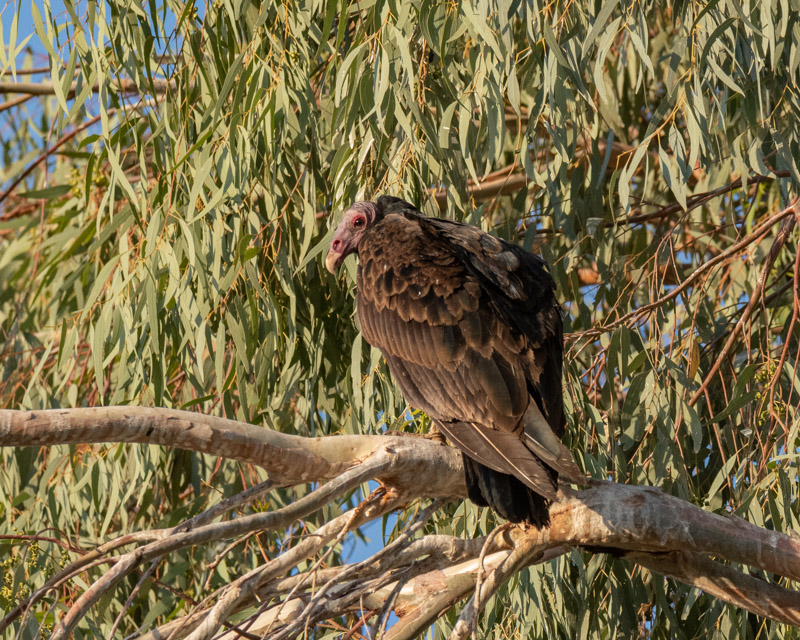
Another of the many birds was sitting at the top of one tree with the half-moon behind it. In this shot, you can see how the Turkey Vulture can appear very dark and this one’s head is much more red than the first one.
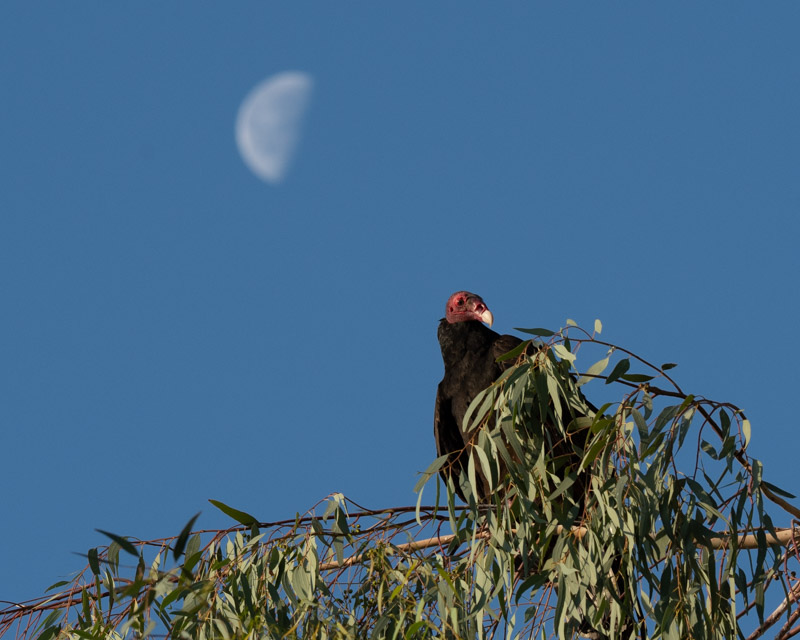
As the bird does one of its wing stretches, you can see the lighter underside of its massive wings. The sun was coming from behind the bird, to the east, casting a glow of early morning light on it. Look closely and you can see right through this bird’s nostrils. Turkey Vultures (TVs) do not have a nasal septum, the wall that separates the nostrils. It makes it easier to keep those big nostrils clean when they are sticking their head inside carcasses to eat. The last thing a TV needs is a sinus infection brought on by partially rotten meat getting stuck inside its “nose”.
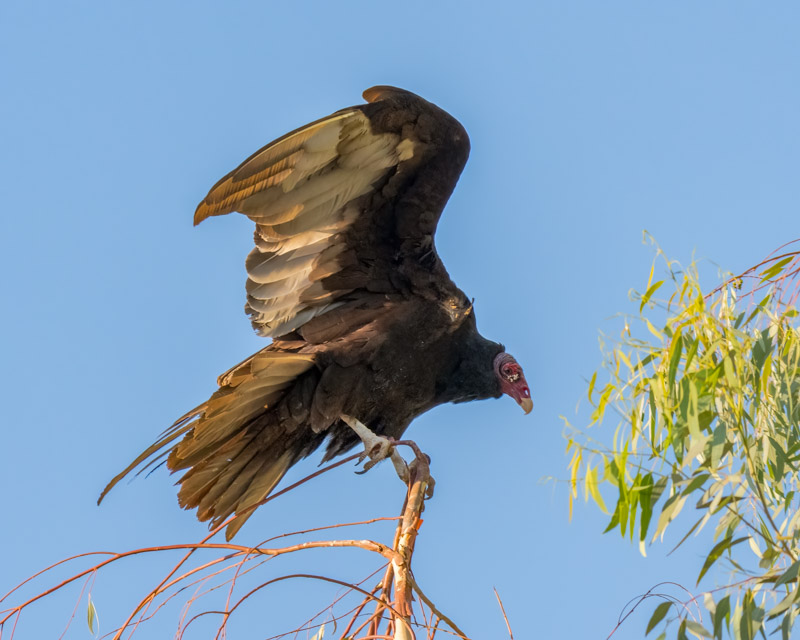
Here is a different perspective on the TV above. Still perched atop that curved branch, it now is looking back at the sunrise with the moon behind it.
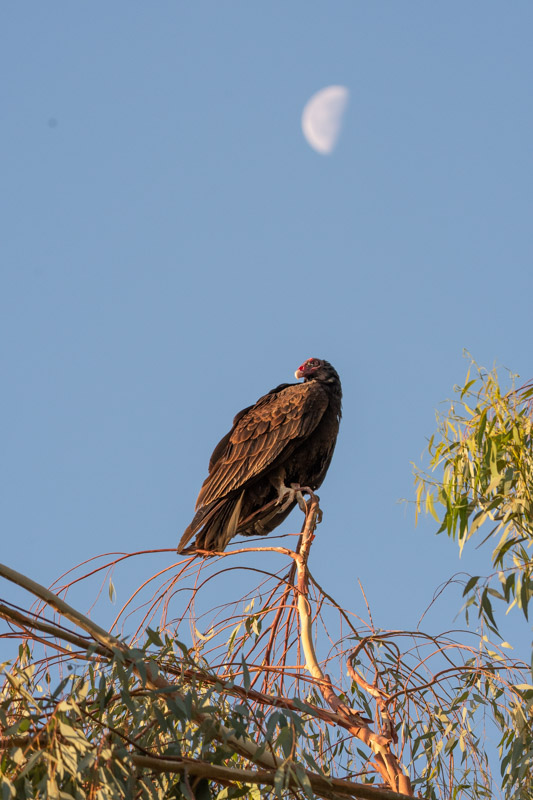
I couldn’t get an exact count but estimate about 50 TV’s roosting in the two eucalyptus trees. Turkey Vultures often roost in very large groups like this. A group of TV’s perched together like this is called a “wake”. Imagine the group mourning over something, dressed in black with their heads hanging down. In flight, a flock of TVs is called a “kettle”- as they rise, wheeling and circling in the air they look like something boiling in a cauldron.
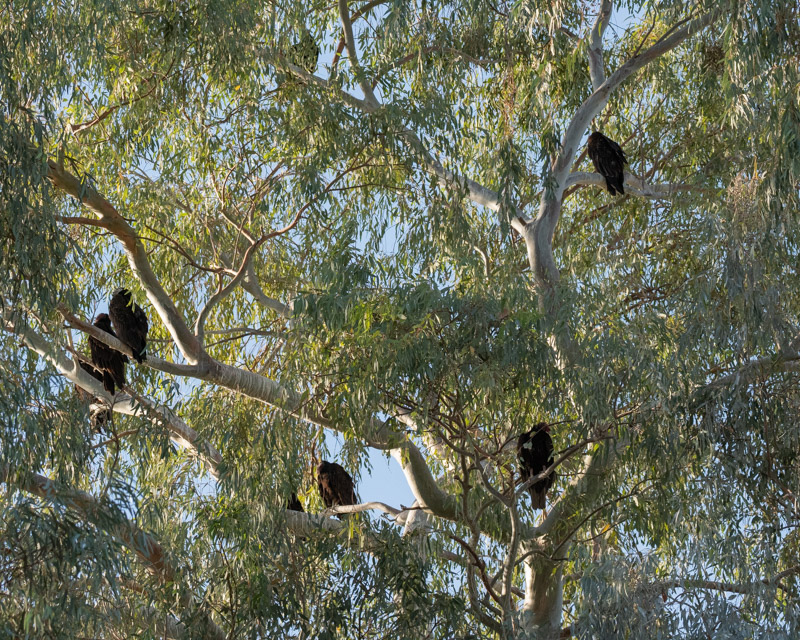
One by one the TVs peeled out of the trees and headed to the west. A Turkey Vulture’s wingspan is between 5 and 6 feet! As big as these birds look, they weigh only four and a half pounds!
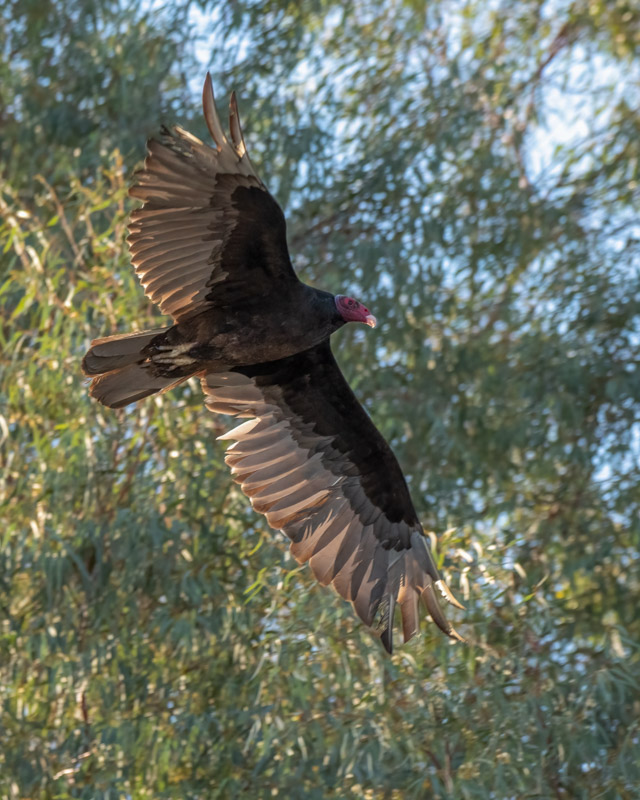
Many of the TVs stopped to perch on light fixtures on the grounds. You can see from the ‘whitewash’ that the light posts are popular perches.
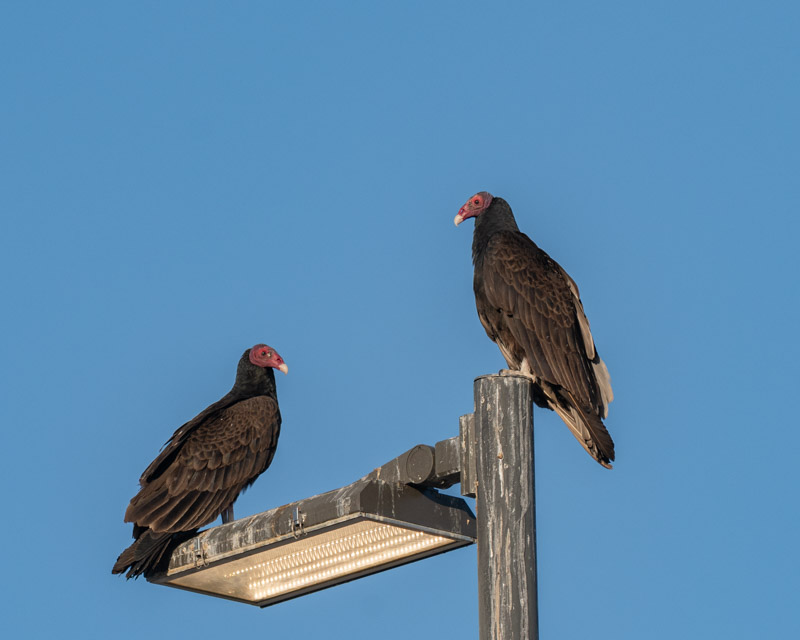
And other TVs arrived to join the pair. As big as these birds are, they look very graceful in flight.
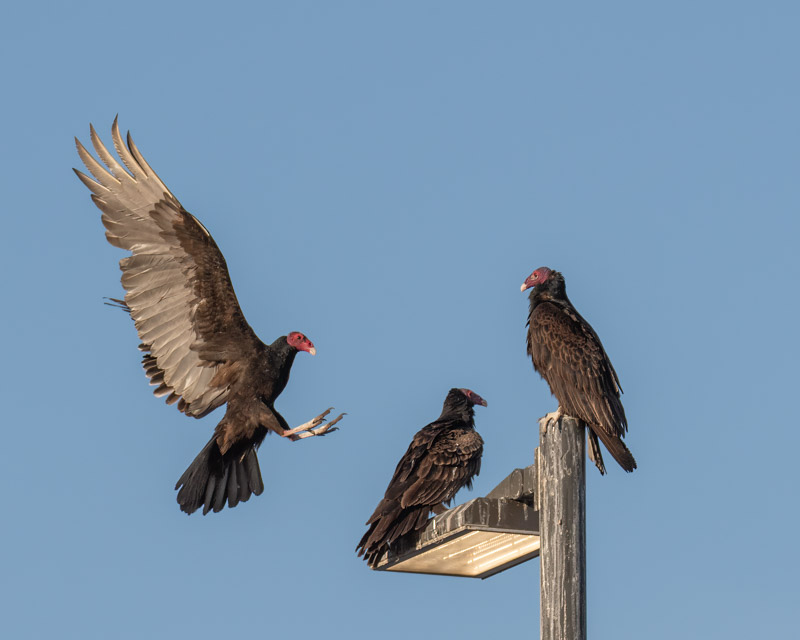
Meanwhile, some other birds moved to a baseball backstop.
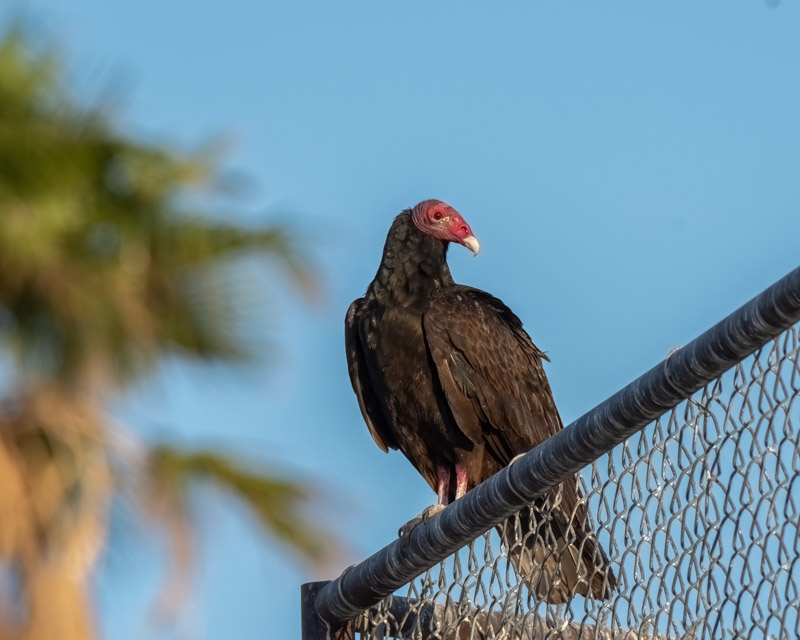
At one point there were enough Turkey Vultures to field a team of nine!! Looking every which way, the TVs were just warming up in the morning sun.
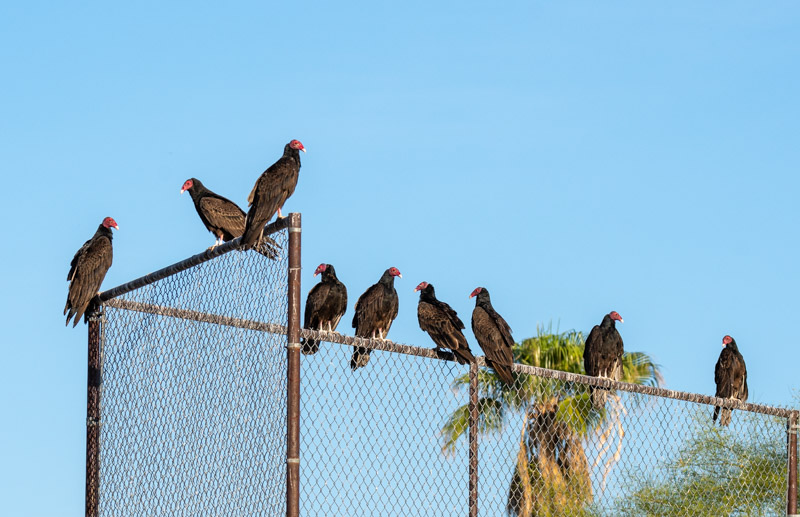
A few of the birds struck a fairly common TV pose with both wings spread. This is called a “horaltic” pose, which just means both wings are spread! There are different purposes for this. In the morning or when it is cold, this can be used to warm up. When the birds are hot, this helps to cool them down through heat loss as the wind moves through the wings. This can also help to dry the wings when they are wet.
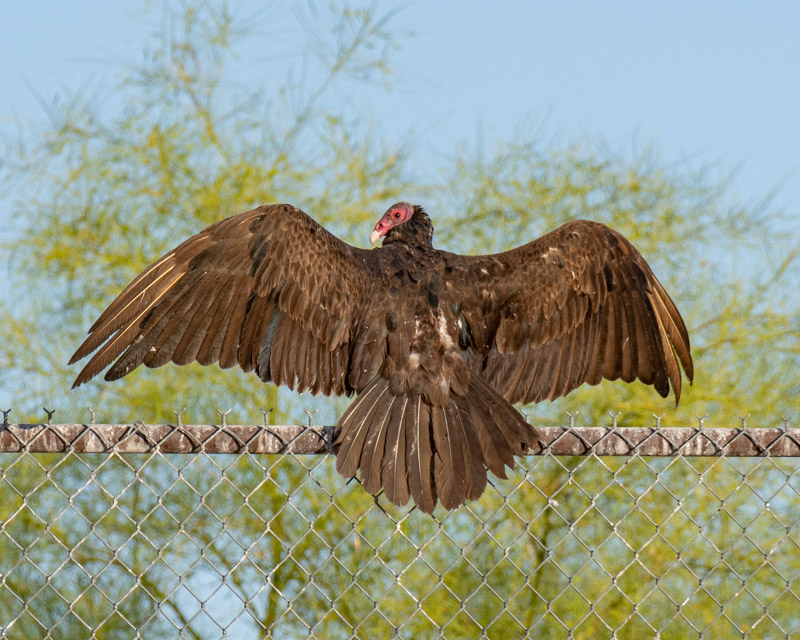
And then it turned as if to say “what are you looking at”. This bird’s brown feathering may reflect old feathers from last year that have faded or it just may be that this TV has lighter feathering. The splotchy white on its back reflect that it spent the night perched below some other TVs and in a “splash zone”.
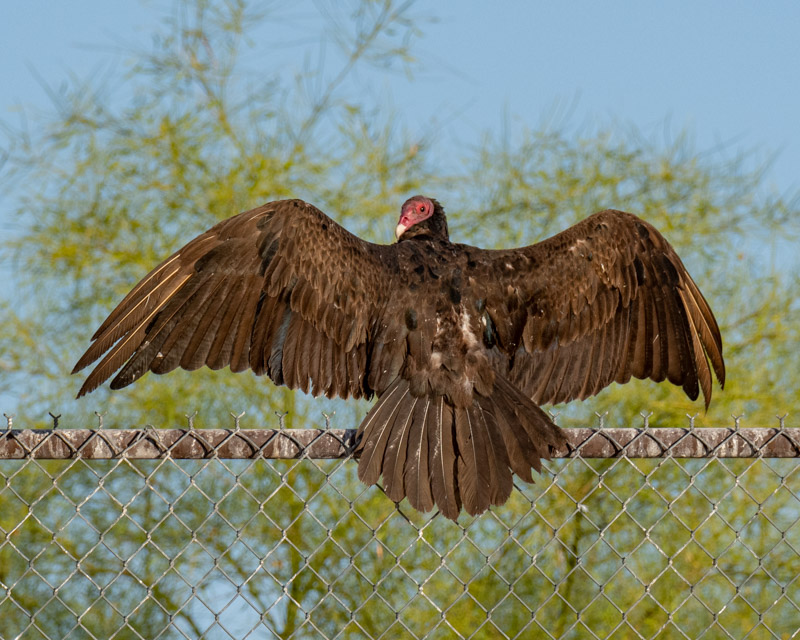
Another TV spread its wings. I can tell this is a different bird because of the tattered feathers on the ends of either wing. The bird above had “primary” feathers that looked less worn while those flight feathers on the bird below which looked broken and tattered. That happens during each year and the TV, like all birds, will soon molt and drop those feathers a few at a time and replace them with new feathers. On the backstop, I imagined this bird as an umpire calling “No balls, two strikes!” Either that or it was doing a Three Stooges eye poke to the other TV.
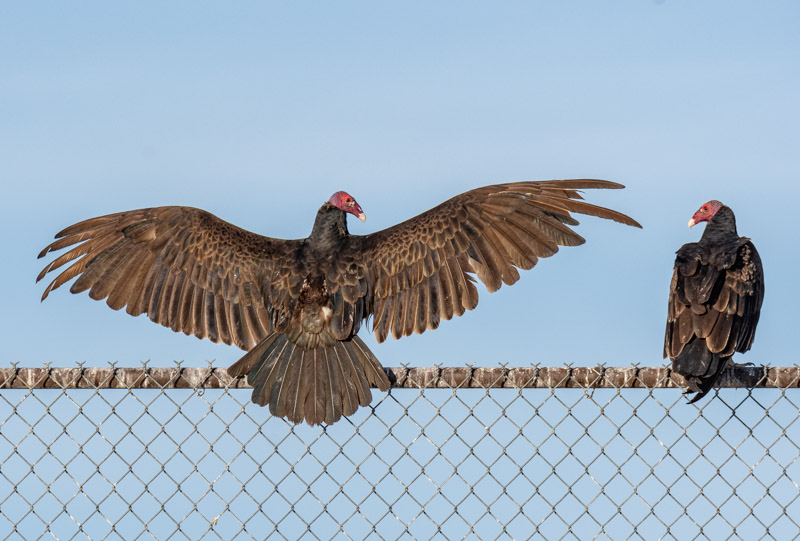
More to come!
(By the way, Turkey Vultures are not buzzards even though many people call them that. Buzzards are birds who live in Europe and parts of Asia. When people came to the Americas, they thought “our” birds looked alike so they called them buzzards. Just like javelinas are not pigs,Turkey Vultures are not Buzzards and are not Turkey Buzzards. They are a completely different bird!)
